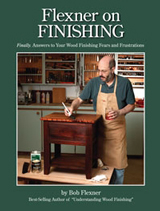We may receive a commission when you use our affiliate links. However, this does not impact our recommendations.

As anyone who’s met me (or read some of my blog entries) likely knows, I’m rather enamored of obscure play references, archaic word usages and sesquipedalism. On my desk, I’ve a calendar of “Forgotten English,” and every morning I like to rip off the previous day’s page, peruse the new word of the day and see if I know (or can surmise) the meaning before reading the definition. (It aggrieves me to admit that more than half the time, I can’t.)
Monday’s entry was “treacle up.” I thought it might mean to take one’s medicine along with a generous helping of molasses to mask the taste. I was mistaken. The given definition is, “To rub, polish. Our parents and grandparents polished their furniture with a homemade mixture of beer, treacle, vinegar, & c.” It was extracted from Edward Gepp’s “A Contribution to an Essex Dialect Dictionary” (1923).
It sounds like a good way to create a sticky situation. Treacle is a syrup produced in sugarcane refining. And beer, well, I’d rather drink it. But a quick Google search reveals that many traditional furniture polishes call for beer, vinegar and some form of sugar. But my favorite find is in “Mackenzie’s five thousand receipts in all the useful and domestic arts.” That “receipt” calls for pumice stone and water, followed by powdered tripoli and boiled linseed oil. How does one powder a Libyan town?!
How about you , have you tried any old-fashioned “receipts” for polish , or like me, would you rather drink the beer?
– Megan Fitzpatrick, managing editor
 To learn more about finishing techniques that don’t involve syrup and beer, check out “Flexner on Finishing.”
To learn more about finishing techniques that don’t involve syrup and beer, check out “Flexner on Finishing.”
Here are some supplies and tools we find essential in our everyday work around the shop. We may receive a commission from sales referred by our links; however, we have carefully selected these products for their usefulness and quality.








Methinks a Conway`s Irish Ale would be a better substitute for the Commodore`s brew……
Or perhaps maybe a mix of beeswax & turpentine, that seems to work rather well!
A few years ago, I started reading all the books I could find on furniture restoration. At the library, there was a handful of books of British origin from the ’60s and ’70s. Almost all had a secret recipe for "furniture reviver" or some such. The standard ingredients were linseed oil, turpentine, vinegar, and ofter another one or two ingredients such as beeswax or "butter of antimony" (what ever that might be).
Then I read this article, http://alsnetbiz.com/homeimprovement/info5.html
that likened it to evil in a jar (even more so than Pledge(R)) I’m glad I never got around to trying it.
Apparently tripoli comes from Illinois (among other places). Who knew?
http://www.onemine.org/search/summary.cfm/ReversePolarity-Dc-PlasmaDriven-ElectroReduction-Of-Refractory-Metals-In-Molten-Oxide-Melts?d=E9E56CBABCDFB283CE063DC1979F4DD533D781FD31CF98A24C25CC0F097234F02830
You better not quaff that fermented libation. It be mine.
Chris